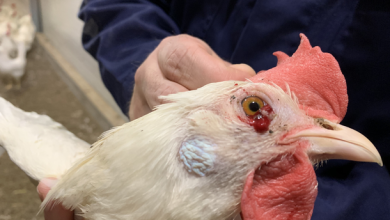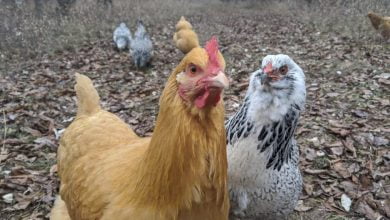Nutritional Value of Poultry Egg: An Overview
Vinayananda C O1, Sudheer. K2 and Rongsensusang
1Department of Livestock Products Technology, Veterinary College Bidar,
21Department of Livestock Products Technology, College of Veterinary Science, Tirupati
3KVK, Mokokchung, Nagaland
The main purpose of the avian egg is for propagation and survival of the species; hatching eggs from guinea fowl, geese, turkeys, ostriches, and emus mainly serve this purpose. However, humans often use bird eggs, other than those from chickens, as an important component of their diet providing an excellent source of high-quality protein, essential fatty acids, vitamins, and minerals
Poultry products have an important role in daily human consumption. Poultry products includes mainly meat and eggs. The use of eggs as food have been seen through different time periods, historical notes and records, and today is considered a significant segment of the daily diet. In modem times eggs have been an important commodity in international trade. Egg industry worldwide is mostly based on the production of chicken eggs. But with population growth, in some countries, increasing emphasis is placed on the production of eggs from other birds like duck, quail, turkey, goose, even emu and ostrich. In fact, eggs are the food that is widely used around the world, making it the egg industry significant segment of the global food industry.
Eggs are a rich source of protein that is of a high biological value. The protein quality of the egg is often the standard for measuring the quality of all other food proteins. Eggs are one of the few foods considered to be a complete protein, because they contain all required essential amino acids, important source of essential unsaturated fatty acids (Linoleic), oleic acid a monounsaturated fatty acid, also rich in minerals like iron, phosphorus, trace minerals and fat soluble vitamins like A, D, E, and K and many of the water soluble B vitamins. The egg is a potent source of vitamin D but it is low in calcium (with the exception of the shell) and devoid of vitamin C. Eggs provide a unique, well-balanced source of nutrients for persons of all ages. Hard-cooked egg yolk are served as the major supplementary source of iron for young babies. Indian Council of Medical Research recommends 180 eggs per day or ½ egg a day to maintain a healthy, balanced diet.
Eggs contribute significantly to the body’s nutrient needs during rapid growth, and are therefore an excellent food for young children and teenagers. The high digestibility and concentrated nutrient content of eggs makes them a valuable food source for those recovering from illness. Most bland diets and the first tight or soft diets during convalescence from surgery or other illness usually include eggs. Eggs are valuable and readily acceptable in diets for file elderly who may have lower caloric needs but have greater difficulty digesting and absorbing nutrients. Adequate nutrient intake in the elderly is critical for health since age-related changes occur in the gastrointestinal tract, and diet can profoundly influence the immune system. Eggs are easily digested and absorbed to provide several essential nutrients. Availability, modest cost, ease of preparation, popular taste appeal, and low caloric value give eggs a deserved place in geriatric diets. Eggs are good for any meal or as snacks. They provide good nutrition, are satisfying, and have a comparatively low-calorie content, important for persons with weight problems.
Eggs are rich in essential amino acids which are mainly considered as ‘building blocks for the body’ because they help to form protein and repair body tissues and cells, help fight infections (immunogenic), keep body fluids in balance, produce hormones, enzymes and antibodies. Similarly, vitamins and minerals present in eggs play major role in maintaining the heathy body conditions like, Vitamin A helps in maintaining the healthy skin and eye tissue and assists in night vision, Vitamin strengthens bones and teeth and may help to protect against certain cancers and auto-immune diseases, Vitamin D is critical for bone health and immune function. Eggs are one of the only foods that naturally contain vitamin D. Vitamin E acts as an antioxidant that plays a role in maintaining good health and preventing disease, Vitamin B12 aids in protection against heart disease, Folate assists in production and maintenance of new cells and helps to prevent a type of anemia, protect against serious birth defects if taken prior to pregnancy and during the first three months of pregnancy and Choline, essential for normal functioning of all cells, but particularly important during pregnancy to support healthy brain development of the fetus. Similarly, minerals like Selenium works with Vitamin E to act as an antioxidant to help prevent the breakdown of body tissues and Iron carries oxygen to the cells, helps prevent anemia and the iron in eggs is easily absorbed by the body. Lutein and Zeaxanthin antioxidants that are believed to reduce the risk of developing cataracts and slow the progression of age-related macular degeneration, a disease that develops with age. Therefore, the nutritive value of eggs from different species are given in table.
| Nutritional Value of Poultry Egg (Value per 100 g of Egg ) | ||||||||
| Nutrient | Unit | Quail | Duck | Goose | Turkey | Chicken | Ostrich | Emu |
| Average Weight | G | 9 | 70 | 144 | 79 | 56 | 1400 | 550 |
| Proximate | ||||||||
| Water | g | 74.35 | 70.83 | 70.43 | 72.5 | 76.15 | 75.1 | 71.8 |
| Energy | kcal | 158 | 185 | 185 | 171 | 143 | 151 | 174 |
| Protein | g | 13.05 | 12.81 | 13.87 | 13.68 | 12.56 | 12.2 | 12.9 |
| Total lipid (fat) | g | 11.09 | 13.77 | 13.27 | 11.88 | 9.51 | 11.7 | 13.8 |
| Ash | g | 1.1 | 1.14 | 1.08 | 0.79 | 1.06 | 1.4 | 1.3 |
| Carbohydrate | g | 0.41 | 1.45 | 1.35 | 1.15 | 0.72 | 0.7 | 0.7 |
| Minerals (mg) | ||||||||
| Calcium, Ca | mg | 64 | 64 | 60 | 99 | 56 | 64.7 | 63.9 |
| Iron, Fe | mg | 3.65 | 3.85 | 3.64 | 4.1 | 1.75 | 2.51 | 2.43 |
| Magnesium, Mg | mg | 13 | 17 | 16 | 13 | 12 | 13.92 | 12.5 |
| Phosphorus, P | mg | 226 | 220 | 208 | 170 | 198 | 196.71 | 198.12 |
| Potassium, K | mg | 132 | 222 | 210 | 142 | 138 | 122.5 | 120.7 |
| Sodium, Na | mg | 141 | 146 | 138 | 151 | 142 | ||
| Zinc, Zn | mg | 1.47 | 1.41 | 1.33 | 1.58 | 1.29 | 1.34 | 0.98 |
| Copper, Cu | mg | 0.062 | 0.062 | 0.062 | 0.062 | 0.072 | 0.54 | 0.43 |
| Manganese, Mn | mg | 0.038 | 0.038 | 0.038 | 0.038 | 0.028 | 0.16 | 0.21 |
| Selenium, Se | µg | 32 | 36.4 | 36.9 | 34.3 | 30.7 | 32.4 | 32 |
| Vitamins | ||||||||
| Thiamin | mg | 0.13 | 0.156 | 0.147 | 0.11 | 0.04 | 0.15 | 0.15 |
| Riboflavin | mg | 0.79 | 0.404 | 0.382 | 0.47 | 0.457 | 0.24 | 0.24 |
| Niacin | mg | 0.15 | 0.2 | 0.189 | 0.024 | 0.075 | ||
| Pantothenic acid | mg | 1.761 | 1.862 | 1.759 | 1.889 | 1.533 | 0.75 | 0.75 |
| Vitamin B-6 | mg | 0.15 | 0.25 | 0.236 | 0.131 | 0.17 | ||
| Folate, total | µg | 66 | 80 | 76 | 71 | 47 | 48 | 48 |
| Choline, total | mg | 263.4 | 263.4 | 263.4 | 293.8 | |||
| Vitamin B-12 | µg | 1.58 | 5.4 | 5.1 | 1.69 | 0.89 | ||
| Vitamin A, RAE | µg | 156 | 194 | 187 | 166 | 160 | 5.79 | 5.79 |
| Retinol | µg | 155 | 192 | 185 | 166 | 160 | ||
| Carotene, beta | µg | 11 | 14 | 13 | 0 | |||
| Cryptoxanthin, beta | µg | 10 | 12 | 12 | 9 | |||
| Vitamin A, IU | IU | 543 | 674 | 650 | 554 | 540 | 383 | 383 |
| Lutein + zeaxanthin | µg | 369 | 459 | 442 | – | 503 | ||
| Vitamin E (alpha-tocopherol) | mg | 1.08 | 1.34 | 1.29 | – | 1.05 | 0.04 | 0.04 |
| Vitamin D (D2 + D3) | µg | 1.4 | 1.7 | 1.7 | – | 2 | – | – |
| Vitamin D | IU | 55 | 69 | 66 | – | 82 | – | – |
| Vitamin K (phylloquinone) | µg | 0.3 | 0.4 | 0.4 | – | 0.3 | – | – |
| Lipids | ||||||||
| Fatty acids, total saturated | g | 3.557 | 3.681 | 3.595 | 3.632 | 3.126 | – | 31* |
| Fatty acids, total monounsaturated | g | 4.324 | 6.525 | 5.747 | 4.571 | 3.658 | – | 58* |
| Fatty acids, total polyunsaturated | g | 1.324 | 1.223 | 1.672 | 1.658 | 1.911 | – | 10* |
| Cholesterol(mg/gm) | mg | 844 | 884 | 852 | 933 | 372 | 10.3 | 15.7 |
| Amino Acids | ||||||||
| Tryptophan | g | 0.209 | 0.26 | 0.282 | 0.219 | 0.167 | – | – |
| Threonine | g | 0.641 | 0.736 | 0.797 | 0.672 | 0.556 | 1.013 | – |
| Isoleucine | g | 0.816 | 0.598 | 0.647 | 0.855 | 0.671 | 0.672 | – |
| Leucine | g | 1.146 | 1.097 | 1.188 | 1.201 | 1.086 | 1.336 | – |
| Lysine | g | 0.881 | 0.951 | 1.03 | 0.924 | 0.912 | 0.947 | – |
| Methionine | g | 0.421 | 0.576 | 0.624 | 0.442 | 0.38 | 0.395 | – |
| Cystine | g | 0.311 | 0.285 | 0.309 | 0.326 | 0.272 | – | – |
| Phenylalanine | g | 0.737 | 0.84 | 0.91 | 0.773 | 0.68 | 0.6 | – |
| Tyrosine | g | 0.543 | 0.613 | 0.664 | 0.569 | 0.499 | 0.547 | – |
| Valine | g | 0.94 | 0.885 | 0.958 | 0.985 | 0.858 | 0.811 | – |
| Arginine | g | 0.835 | 0.765 | 0.828 | 0.876 | 0.82 | 0.527 | – |
| Histidine | g | 0.315 | 0.32 | 0.346 | 0.33 | 0.309 | 0.284 | – |
| Alanine | g | 0.762 | 0.631 | 0.683 | 0.799 | 0.735 | 0.316 | – |
| Aspartic acid | g | 1.294 | 0.777 | 0.841 | 1.357 | 1.329 | – | – |
| Glutamic acid | g | 1.662 | 1.789 | 1.937 | 1.742 | 1.673 | – | – |
| Glycine | g | 0.434 | 0.422 | 0.457 | 0.455 | 0.432 | – | – |
| Proline | g | 0.518 | 0.48 | 0.52 | 0.543 | 0.512 | – | – |
| Serine | g | 0.992 | 0.963 | 1.043 | 1.04 | 0.971 | 0.832 | – |
(Source: USDA Food Composition Databases, 2018; Angel (1993); ‘Du Preez (1991))
Reference:
ANGEL, C.R. (1993) Nutrient profiles of ostrich and emu eggs as indicators of nutritional status of the hen and chick. Proceedings of the Meeting of the Australian Ostrich Association Inc. (Vic), 23 July 1993 Proceedings No 21 7, Postgraduate Committee in Veterinary Science, University of Sydney, pp. 138-140.
DU PREEZ, J.J. (1991) Ostrich nutrition and management. In: Recent Advances in Animal Nutrition in Australia (Ed Farrell, D.J.), University of New England, Armidale, Australia, p. 279


